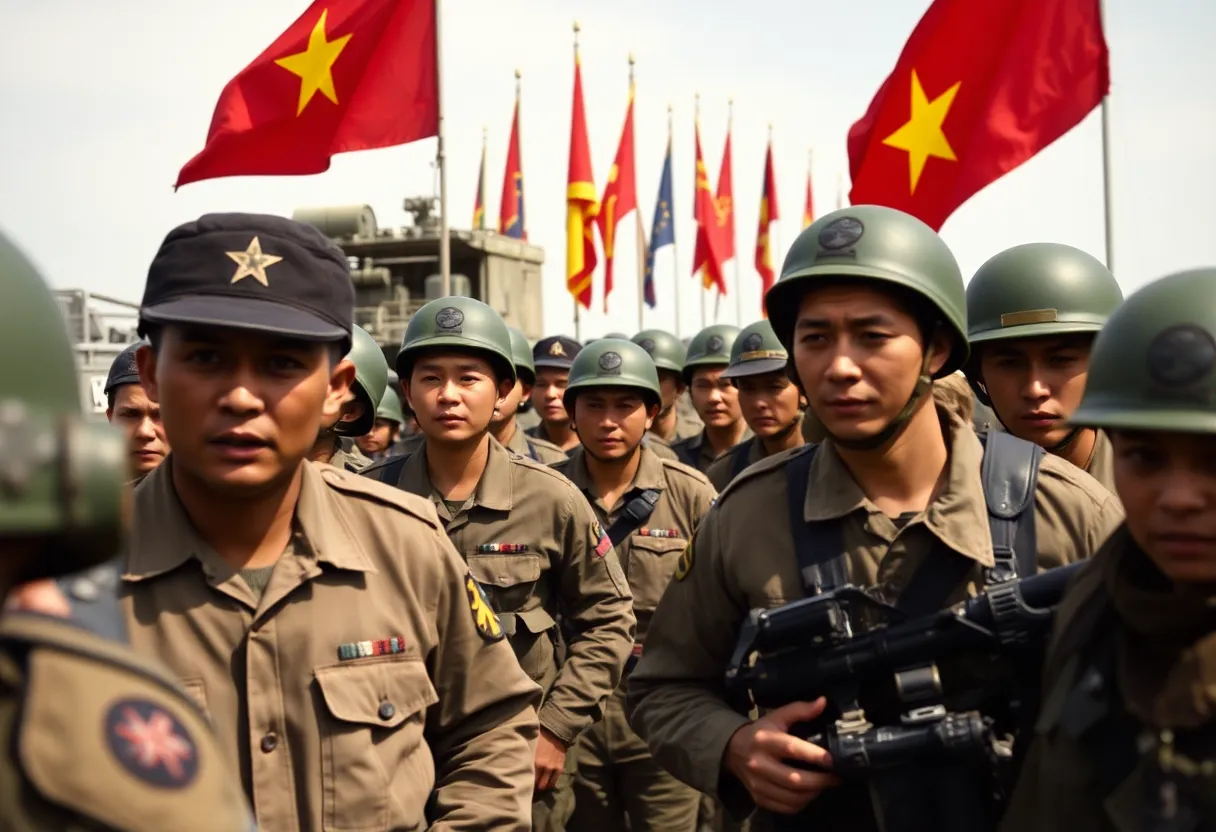

U.S. Troops Departure from Vietnam
Want to target the right audience? Sponsor our site and choose your specific industry to connect with a relevant audience.
Prominent brand mentions across targeted, industry-focused articles
High-visibility placements that speak directly to an engaged local audience
Guaranteed coverage that maximizes exposure and reinforces your brand presence
Interested in seeing what sponsored content looks like on our platform?
May’s Roofing & Contracting
Forwal Construction
NSC Clips
Real Internet Sales
Suited
Florida4Golf
Click the button below to sponsor our articles:
Sponsor Our ArticlesOn March 29, 1973, the last U.S. combat troops officially left South Vietnam, marking the end of America’s direct military involvement in the Vietnam War. This momentous occasion followed a peace agreement signed earlier that year, aimed at resolving the long-standing conflict. In addition to troop withdrawal, many American prisoners of war were released, signaling steps towards reconciliation. Even after the withdrawal, 7,000 civilian employees remained to assist the South Vietnamese government, highlighting ongoing U.S. commitment to the region.
On March 29, 1973, a significant chapter in American military history came to a close when the last U.S. combat troops departed from South Vietnam. This momentous occasion followed the signing of a peace agreement aimed at ending the Vietnam War just two months earlier. With this withdrawal, America’s direct involvement in a conflict that had lasted for **eight tumultuous years** officially came to an end.
The departure of American troops was not the only noteworthy event of the day. At the same time, many American prisoners of war held in North Vietnam were also released by the Hanoi government. This gesture marked a significant step towards healing some of the wounds inflicted by the long and painful war, although many families continued to carry the scars of those lost during the conflict.
Despite the end of combat troop operations, the U.S. still had a presence in the region. Around 7,000 civilian employees from the Department of Defense chose to remain in South Vietnam to assist the South Vietnamese government, underscoring America’s ongoing commitment to the region despite the withdrawal of military forces.
Reflecting on the war, it all began back in 1961 when President John F. Kennedy sent the first significant military personnel to Vietnam, all in a bid to help bolster the South Vietnamese regime against the North. Fast-forward to 1965, when troop levels surged to over 300,000 following North Vietnamese offensives, a decision made under President Lyndon B. Johnson’s administration. The urgency of the conflict escalated, especially after incidents like the Tet Offensive in 1968 and the My Lai massacre, leading to a growing wave of public disapproval against the war.
As the opposition steadily grew, a peak of nearly 550,000 U.S. troops was reached by spring 1969. It was during this tumultuous time that President Richard Nixon introduced the **“Vietnamization” policy**, aiming to withdraw American forces while handing over the fighting responsibilities to South Vietnamese troops. Despite these efforts, significant troop reductions only materialized in the early 1970s alongside military operations in neighboring Cambodia and Laos.
By January 1973, a peace agreement was finally signed, which included a ceasefire, the withdrawal of U.S. troops, and provisions for the release of prisoners of war. However, this agreement was met with skepticism as many criticized it as merely a face-saving measure. Notably, even before the last American forces left, North Vietnamese troops had already violated the ceasefire, raising concerns about ongoing conflicts.
Sadly, full-scale war erupted once more by early 1974, resulting in considerable casualties among South Vietnamese forces. The Vietnam War, ultimately, would go down as the longest and one of the most unpopular foreign wars in U.S. history, with around 58,000 American lives lost and an estimated two million Vietnamese casualties.
The chaotic conclusion came on April 30, 1975, when Saigon fell to communist forces. In the end, the remaining Americans were airlifted out, marking the definitive end of the Vietnam conflict. This multifaceted and heartbreaking saga still reverberates in history, resonating in the memories of many who experienced the era.
As we reflect on these historical events, it’s a clear reminder of the complexities involved in war and the value of peace. The legacy of Vietnam remains a topic for discussion and remembrance in various forums today.
News Summary Florida is facing a record bloom of sargassum seaweed, causing foul odors and…
News Summary The Florida Board of Governors has rejected Santa Ono's candidacy for the presidency…
News Summary A crane collapsed at the construction site for the new Cape Canaveral Hospital…
News Summary Governor Ron DeSantis has appointed Anastasios 'Stasi' Kamoutsas as Florida's new Commissioner of…
News Summary The Leon County Commission is set to review the Lake Munson Action Plan,…
News Summary Local dining establishments in Tallahassee are facing a decline in customer foot traffic…